- Running racing
- course diagrams

Course diagrams
Clear communication is important to give sailors the best experience and many will rely on simple, easy to understand course diagrams.
World Sailing uses a system of assigning symbols to courses (course signals) which consist of letters and numbers. The number always relates to the number of beats that a competitor is to sail to complete that course.
Course designations
- L - windward/leeward course with a leeward finish
- I - an inner loop trapezoid
- O - an outer loop trapezoid
- M - a windward / leeward with a leeward finish with starboard mark roundings (commonly used for match racing)
- A - course with an offset mark at the windward end
- R - course with a reaching finish at the leeward end
- X - course with non-standard finish
So an LRA2 course would be a windward / leeward course with an offset mark at the windward end and a reaching finish with two windward legs
Select the relevant course name to show and download it's diagram.
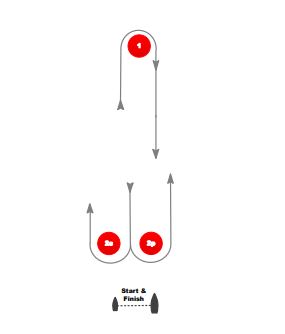
- Back to Running Racing
- Running racing
- course diagrams
Course diagrams
Clear communication is important to give sailors the best experience and many will rely on simple, easy to understand course diagrams.
World Sailing uses a system of assigning symbols to courses (course signals) which consist of letters and numbers. The number always relates to the number of beats that a competitor is to sail to complete that course.
Course designations
- L - windward/leeward course with a leeward finish
- I - an inner loop trapezoid
- O - an outer loop trapezoid
- M - a windward / leeward with a leeward finish with starboard mark roundings (commonly used for match racing)
- A - course with an offset mark at the windward end
- R - course with a reaching finish at the leeward end
- X - course with non-standard finish
So an LRA2 course would be a windward / leeward course with an offset mark at the windward end and a reaching finish with two windward legs
Select the relevant course name to show and download it's diagram.

- Back to Running Racing

- Get Sailing
- Pleasure craft operator card
- Sustainability
- Sail numbers
- Sailing 101
- Sailing for kids
Find a Club or School
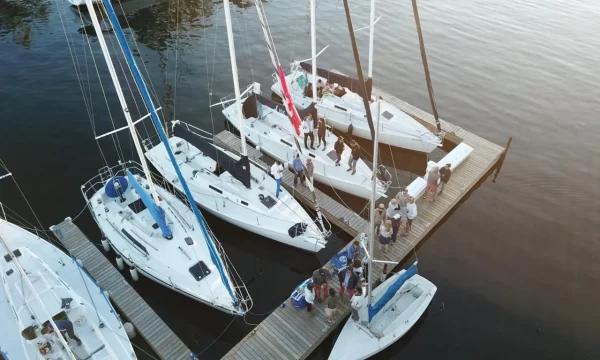
- Sailor programs
- Long Term Development
- Instructors & Coaches
- Personal Survival Training
- Courses And Seminars Calendar
- Inclusion, Diversity and Equity
Get on the water today
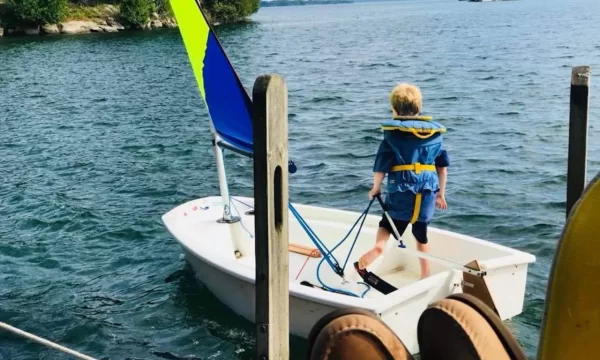
- 2024 Canadian Sailing Team
- 2024 Canadian sailing Development squad
- Teams Qualification
- National sail training centres
- International results
VIEW THE TEAMS
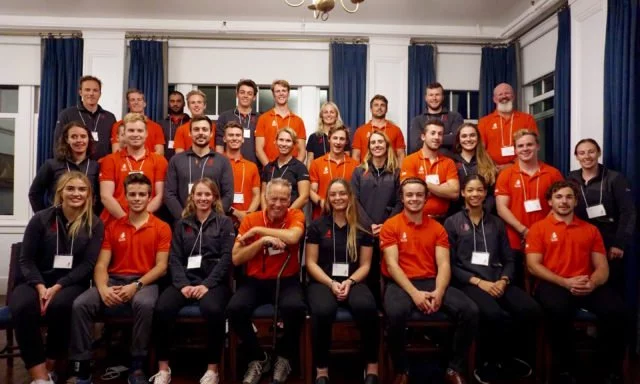
- Competition
- Sail canada championships
- Rules & regulations
- Offshore racing
- Canadian ESailing Championships
SAIL CANADA CHAMPIONSHIP
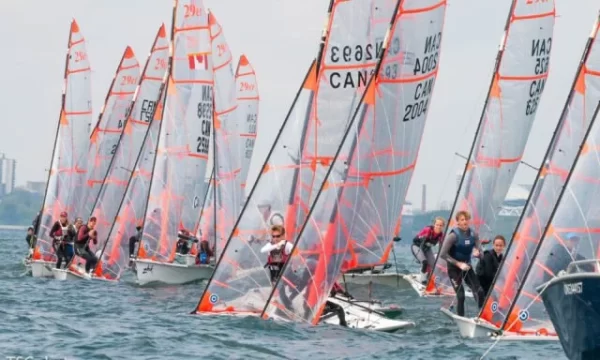
Course Diagrams
© (2023) Robert Woodbury Creative Commons License: Attribution-NonCommercial-ShareAlike 4.0 International (CC BY-NC-SA 4.0)
Use by clubs for conducting races is deemed a non-commercial use.
World Sailing uses a system of assigning symbols to courses (course signals) comprising combinations of letters and a single digit. The letters occur in three groups: course type, finish type, course modifer. At most one letter occurs per group and the groups have a specific order. The digit always occurs last and specifies the number of beats required to sail the course.
Course designations
Course type.
| windward/leeward course with a leeward finish | |
| windward / leeward with a leeward finish with starboard mark roundings (commonly used for match racing) | |
| windward/leeward course with a windward finish | |
| inner loop trapezoid | |
| outer loop trapezoid | |
| triangular course with start and finish in the middle of the beat | |
| any other course |
Finish type
| course with a reaching finish after a port mark rounding | |
| course with a reaching finish after a starboard mark rounding | |
| slalom finish | |
| leeward finish (used for triangular courses only) | |
| windward finish (used for triangular courses only) |
Course modifier
| course with an offset mark at the windward end |
Thus an LRA2 course would be a windward/leeward course with a reaching finish and an offset mark at the windward end with two windward legs. However, different courses may have exactly the same designation. For instance, an L course might have a gate or a single leeward mark. Another way of saying this is that many course features lie outside of the course symbol system. This is generally a good thing as it means that a race committee can use a small set of course letters and competitors do not have to remember many fine distinctions in course designations.
These conventions cover only some generally used courses. Specific courses arise for several reasons, for instance, unusual race format types, class rules and local conditions. For instance, the Optimist class has a particular trapezoid course designated IOD .
The above follow the World Sailing conventions. They provide a model scheme, but do not dictate the course designators for a particular event. Many factors may be in play, some as simple as the number of characters available on a course board. In addition, some designations may be common practice, such as H for a “Hollywood” finish (that is, a reaching finish) instead of R . In any case, competitors appreciate clarity and consistency. Choose carefully.
This site provides each diagram in two forms: with and without mark rounding orders. Some race officers prefer to write their own mark rounding specifications, for instance, when the signals they use differ from the norm (and this is OK!).
Nota Bene. None of these diagrams are to scale. Graphic clarity trumps correct relative sizes and distances. In particular, mark diameters and vessel lengths are much larger than scale would dictate. In some courses, notably trapezoids, leg lengths differ that should be equal. However, specific angles are always correct.
Windward Leeward Courses
|
| L | The simplest possible windward leeward course. Suitable for club races with few starts. | – – | |
| L | A basic windward leeward course. | – – | ||
|
| L | A windward leeward course with the start and finish line mid-course. It can be difficult to record finishes with large fleets and multiple starts. | – – | |
|
| L | A windward leeward course with a separate finish line. | – – | |
|
| L | A windward leeward course with a gate.. | – – | |
|
| W | A windward leeward course with a windward finish | – – |

Winward Leeward Courses with an Offset Mark
|
| LA | A windward leeward course with an offset mark. | – – | |
|
| LA | A windward leeward course with an offset mark and a gate. | – – | |
|
| WA | A windward leeward course with an offset mark a windward finish. | – – |
Windward Leeward Course Marks to Starboard
|
| M | A windward leeward course with starboard mark roundings. Often used for match racing. | – – |
Trapezoid Courses
| O | A generic outer trapezoid course. | – – | ||
|
| I | A generic inner trapezoid course. | – – | |
|
| IO | A generic trapezoid course for both inner and outer loops. | – – | |
|
| O | The standard ILCA class outer trapezoid. | – – | |
|
| I | The standard ILCA class inner trapezoid. | – – | |
|
| IO | The ILCA trapezoid course specifiying both inner and outer loops. | – – | |
|
| TL | A triangle course with leeward finish | – – | |
|
| TW | A triangle course with windward finish. | – – |
Team Racing Courses
|
| OT | An alternative course for Optimist team racing. | – – | |
|
| OT | An alternative course for Optimist team racing. | – – | |
| OT | An alternative course for Optimist team racing. | – – |
Courses Used at CORK
| L | A windward leeward course with a gate and a direct finish from the last mark. | – – | ||
| LR | A windward leeward course with a reaching finish from the port gate mark. | – – | ||
|
| LAR | A windward leeward course with an offset mark and a reaching finish. | – – | |
|
| G | A course for the Optimist Green fleet. | – – | |
|
| OT | A course for Optimist team racing. Very similar to a general team racing course. | – – | |
|
| TR | A triangle course with a variant finish | – – | |
| IO | A general trapezoid course specifying both inner and outer loops | – – | ||
|
| X | A CORK course for the WASZP class. | – – | |
| X | A CORK course for the WASZP class. | – – | ||
| X | A CORK course for the WASZP class. | – – | ||
|
| X | A CORK course for the WASZP class. | – – | |
|
| X | A kiteboard course. | – – |
Boat Specific Courses
| Name | Course Designator | Course Description | Download | |
|
| T | A course specifically for the WASZP class. | – – | |
|
|
| C | The WASZP championship course. | – – |
| IOD | The Optimist class trapezoid course | – – | ||
|
| L | A course for Moths. Note windward gate and wide gates. | – – | |
|
|
| X | A course for kiteboards. | – – |
|
| X | A course for kiteboards. | – – | |
|
| X | A course for kiteboards. | – – | |
| SL | A sailboard slalom course. | – – | ||
|
| TP1 | A slalom course for foiling sailboards. | – – |

- Instructors & Coaches
- Rules & regulations
- Find a club/School
- job postings
- Provincial sailing associations
- Return Policy


Hatteras Sailing
encouraging youth sailing and competitive opportunities
Basic Race Course Starting Knowledge
STARTS are challenging and fun! If you are new to the sailboat racing world, it can really seem intimidating. Thats alright, dont let it intimidate you, because once you get it wired you will love the STARTS! In order not to overwhelm, we will begin with some rudimentary basics. More advanced starting topics and techniques will come once these basic skills are mastered.
Your Objective – Always focus on your objective above all things!
For Sailboat racing, the objective is always to be the winner of the race. This is true for fleet and match racing, but maybe slightly different for Team Racing. Right now though we are going to set this aside until later. It all begins with the Starting Line though and to be the winner of most races, you have to get off to a good start! Here are a few bullet points of the most basic issues to concentrate on for beginners.
- Identify where the Start Line is and which direction you are to go across the line and what mark you are heading toward after the start.
- Understand the Starting Sequence and time line and how to use your own watch for the start countdown
- Avoid hitting and fouling other boats, which means understanding the basic right of way rules
- Controlling your boat’s speed, stopping and starting, sail control, rudder control, crew weight and positioning
- Do your very best to be at the line at the start signal, moving at top boat speed, in the right direction… yes this might sound easier than it is, but its what you want to strive for. Don’t be hard on yourself if it you are not able to do this every time!
The Racecourse Options
Regattas and sailboat races have several different layouts, based on how the club running the race decides to set it up. The diagram below is a typical set of options that the Race Committee usually might choose from. During the day of racing, they may even change the course layout. This decision is usually based on the weather, number of boats and the speed of the boats based on the current conditions. The race committee options for the regatta are in the racing instructions and this is something you need to keep in a dry bag on your boat with you during the regatta, so you can identify how, where and how many times around the marks you are suppose to sail.

The next diagrams are of the start line and some basic wind information that you need to understand to optimize your start.
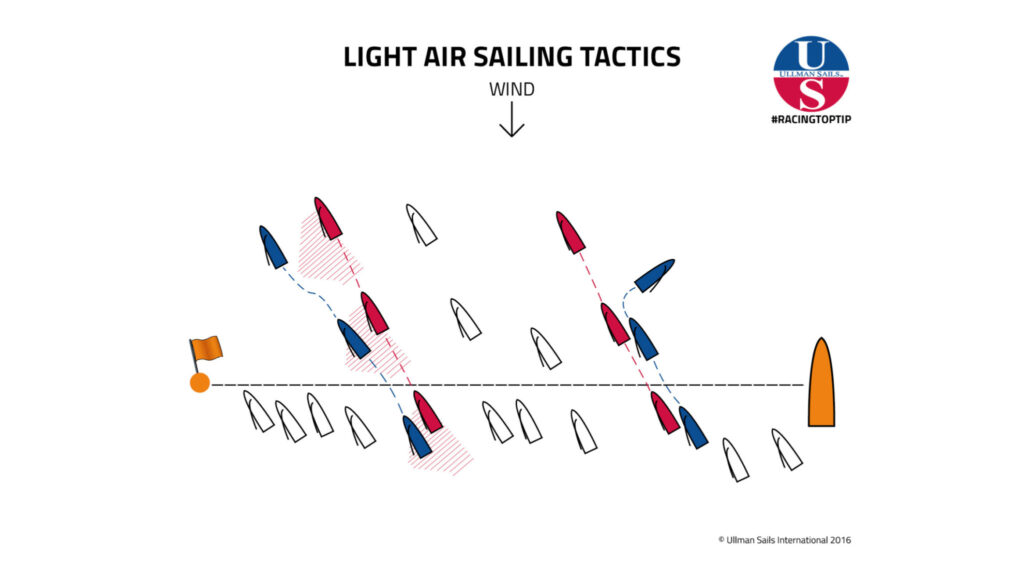
Starting Sequence
Racing starts have different start countdowns. Its pretty hard to time things if you dont have some sort of digital watch with countdown timer options. There are nice expensive racing watches…. click here for one example , otherwise most standard inexpensive water resistant watches will work, they are just a little more complicated to get to the timer settings and this takes practice, but thats what I grew up using, so it works. For our club practices we will use the following sequences for training.
- 1 Minute Preparatory Warning Signal
- 5 Minute Starting Signal
- 1 Minute Warning Signal
- Starting Signal
The 1 minute prep signal allows you to make sure your timer is setup and ready so you can press the start button on your watch exactly when the 5 minute countdown signal is made. If you miss this, then you have a second chance to get in time with the 1 minute warning signal… dont miss your second chance, because its your last chance.
Now once you have the time on your watch, you can start focusing your attention on the boat speed and maneuvers to get you at the line on time.
Most important factors now are……

Ladder Rungs: Understand the Race Course with a Visual Approach
Ladder rungs help you understand the race course and avoid misconceptions.
Many sailors have basic misconceptions about race course geometry. This leads them to to think incorrectly about questions such as:
- Should I reference the windward mark when determining where to start?
- Should I determine the lifted tack based on the rhumb line to the mark?
- How do I determine the favored end of the finish line?
The concept of ladder rungs has been around a long time and is a very useful tool for understanding these and many more questions. Ladder rungs give you a visual approach to understanding the course.
This SailZing video uses animations and takes you through a series of examples and questions to show how to use ladder rungs.
Related Content:
RaceQs video showing ladder rungs during a race Speed and Smarts Issue 112 – page 6 shows why you should sail toward the next shift Peter Isler Video on Starting – shows why mark placement is irrelevant
Sailors Helping Sailors
Will you share your knowledge with your related Comments below?
Leave a Comment Cancel Reply
You must be logged in to post a comment.
This site uses Akismet to reduce spam. Learn how your comment data is processed .
